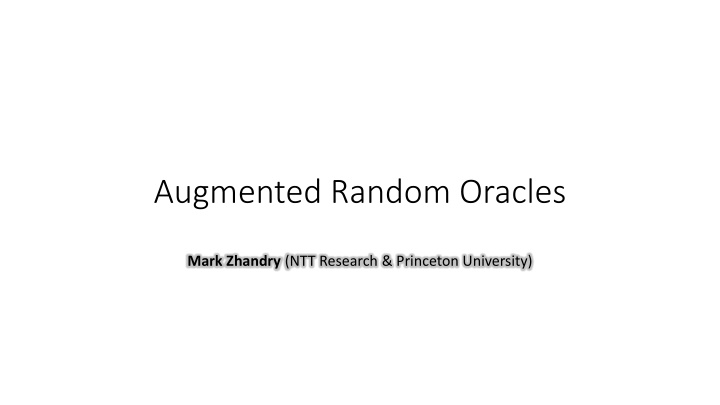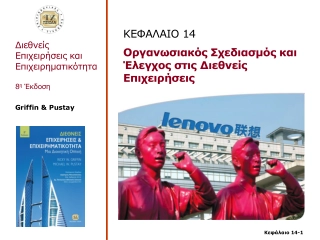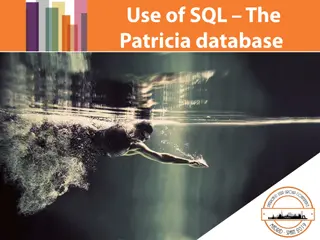
Augmented Random Oracles and Hash Cryptosystems Overview
Explore the concept of augmented random oracles and the challenges in proving security in hash cryptosystems. Learn about the Random Oracle Model (ROM), its limitations, and efforts to design a model for improved security without instantiability issues. Dive into case studies like Encrypt-with-Hash (EwH) and understand the theorems and proofs surrounding their security guarantees.
Download Presentation

Please find below an Image/Link to download the presentation.
The content on the website is provided AS IS for your information and personal use only. It may not be sold, licensed, or shared on other websites without obtaining consent from the author. If you encounter any issues during the download, it is possible that the publisher has removed the file from their server.
You are allowed to download the files provided on this website for personal or commercial use, subject to the condition that they are used lawfully. All files are the property of their respective owners.
The content on the website is provided AS IS for your information and personal use only. It may not be sold, licensed, or shared on other websites without obtaining consent from the author.
E N D
Presentation Transcript
Augmented Random Oracles Mark Zhandry (NTT Research & Princeton University)
Hash H Cryptosystem Sometimes can t prove security. Then what?
Random Oracle Model (ROM) [Bellare-Rogaway 93] $ O Funcs Cryptosystem Idea: Prove security in ROM, then hope security translates to concrete hash e.g. SHA2
[Canetti-Goldreich-Halevi98] ROM uninstantiability: scheme S st: (1) SO secure in ROM, but (2) concrete H, SH insecure Since CGH 98, numerous other uninstantiabilities: [Dent 02, Goldwasser-Kalai 03, Bellare-Boldyreva- Palacio 04, Maurer-Renner-Holenstein 04, Black 06, Brzuska-Farshim-Mittleback 15] Despite these works, the ROM remains widely used
Our goal: Design a model that avoids uninstantiability results, while still allowing proofs beyond the standard model
Case study: Encrypt-with-Hash (EwH)
EwH [Bellare-Boldyreva-ONeill07]: c = Enc(m ; H(pk||m) ) PKE Thm[BBO 07]: If PKE is IND-CPA EwH is secure deterministic encryption in random oracle model
Thm [Brzuska-Farshim-Mittelbach14]: Under suitable assumptions, IND-CPA PKE s.t. EwH is insecure for any hash function
Proof sketch: Assume IND-CPA PKE. Construct new PKE Pm,r( <H> ) { if H(m)==r: return m; else: return ; } c = Enc (m ; r ), Pm,r Insecurity of EwH: just feed code of hash function into Pm,r Security of PKE: Pm,r reveals m!
Proof sketch: Assume IND-CPA PKE. Construct new PKE Pm,r( <H> ) { if H(m)==r: return m; else: return ; } c = Enc (m ; r ), Obf(Pm,r) Insecurity of EwH: just feed code into obfuscated Pm,r Security of PKE, intuition: given just black-box access to Pm,r, no way to find accepting input
Key Takeaway: ROM uninstantiabilities use that concrete hash functions have code, but random oracles do not. However, they don t care about what the actual code does Our goal: Design model where O does have code, namely instruction to make query
Asharov-Segev15 Model: Obf Permutation Eval O <P>||r -1(P ) P <P>||r PO(x) (P , x) (only direct access to forward queries) Thm[AS 15] (informal): Limits on the power of obfuscation
Initial idea: prove security in AS15 model instead of ROM O Obf Security in AS 15 model resilience to BFM 14 techniques
FHE O NIZK Obf Q: TM or circuits? SNARG Q: Can P make obfuscate queries?
FHE Thm (this work): EwH uninstantiable from FHE + lockable obfuscation (both implied by circularly secure LWE) O NIZK Obf Q: TM or circuits? SNARG Q: Can P make obfuscate queries?
FHE Yet-to-be- discovered MPC O NIZK Obf Garbled circuits FSS Q: TM or circuits? SNARG Q: Can P make obfuscate queries?
FHE Yet-to-be- discovered MPC O NIZK Obf Garbled circuits FSS Q: TM or circuits? SNARG Q: Can P make obfuscate queries?
This Work: Augmented Random Oracle Model (AROM) Non-black box tools e.g. underlying IND-CPA PKE M Building Block O e.g. EwH Transform Def: Transform is secure in AROM if security holds for all possible building blocks (meeting prescribed security notion) and all efficient M
This Work: Augmented Random Oracle Model (AROM) Plain ROM Non-black box tools e.g. underlying IND-CPA PKE M Building Block O e.g. EwH Transform Def: Transform is secure in AROM if security holds for all possible building blocks (meeting prescribed security notion) and all efficient M
This Work: Augmented Random Oracle Model (AROM) Non-black box tools e.g. underlying IND-CPA PKE M Building Block O e.g. EwH Transform Def: Transform is secure in AROM if security holds for all possible building blocks (meeting prescribed security notion) and all efficient M
Q: How to prove security in the AROM? Can still do standard-model reductions. But anything else? Q: Can the AROM prove anything beyond standard model? Challenges: Observability: adversary may hide queries to O inside queries to M Programmability: reprogrammed O will be inconsistent with M
Thm (this work): Lossy PKE EwH secure in AROM [Wichs 13]: unlikely to prove in standard model Thm (this work): Statistically sound public coin proof Fiat-Shamir secure in the AROM [Bitansky-Dachman-Soled-Garg-Jain-Kalai-Lo pez-Alt-Wichs 13]: unlikely to prove in standard model Thm (this work):Lossy PKE CCA-secure encryption in AROM Not known in standard model
Idea: statistical properties of base cryptosystem can brute-force O,M to observe/program O
Related Work: Non-programmable ROM [Nielsen 02, Fischlin-Lehmann-Ristenpart 10] Non-observable ROM [Ananth-Bhaskar 12] Universal computational extractors (UCE) [Bellare-Hoang-Keelveedhi 13] [Canetti 97, ]: instantiate certain ROM properties from well-established tools [Boneh-Boyen 04, ]: remove ROM from cryptosystem AROM: Only model designed specifically based on uninstantiability results






















